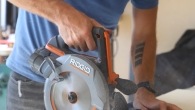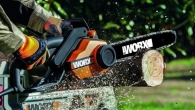
Sharpening Your Lawn Mower Blades: A Step-by-Step Guide
A dull lawn mower blade can turn a simple chore into a frustrating ordeal. Not only does it make mowing less efficient, but it also damages your grass. A sharp blade, on the other hand, cuts cleanly, promoting healthy grass growth. So, how can you keep your lawn mower blades sharp? Let’s dive into the details.
Why Sharp Blades Matter
Before we get into the sharpening process, let’s understand why sharp blades are crucial. A dull blade tears the grass, leaving it brown and ragged. This can lead to various lawn problems, such as disease, pests, and weeds. A sharp blade, however, cuts cleanly, promoting a healthier, greener lawn.
Signs of a Dull Blade
How can you tell if your blade needs sharpening? Here are some common signs:
- Poor Cutting Performance: If your mower struggles to cut through the grass, it’s likely a sign of a dull blade.
- Ragged Grass Cut: A dull blade tears the grass, leaving it with a jagged edge.
- Increased Mowing Time: A dull blade makes mowing less efficient, requiring more passes over the same area.
- Scalping: A dull blade can scalp your lawn, removing too much grass and damaging the root system.

Safety First
Before you start sharpening your lawn mower blade, it’s essential to prioritize safety. Here are some safety tips to keep in mind:
- Disconnect the Spark Plug: This prevents accidental starting of the mower.
- Wear Protective Gear: Always wear safety goggles and gloves to protect your eyes and hands.
- Secure the Blade: Use a vise or clamp to hold the blade securely in place.
- Maintain Proper Posture: Avoid leaning over the blade to reduce the risk of injury.
Discuss the importance of testing the blades on a small patch of grass
Once you’ve sharpened your lawn mower blades, it’s essential to test them on a small, inconspicuous patch of grass before mowing your entire lawn. This step is crucial for several reasons:
-
Even Cutting:
- Consistent Height: A well-sharpened blade will cut the grass to a consistent height, resulting in a neat and tidy appearance.
- Clean Cut: A sharp blade produces a clean cut, reducing the risk of disease and promoting healthy grass growth.
-
Efficient Mowing:
- Reduced Effort: A sharp blade requires less power to cut through the grass, making mowing easier and faster.
- Fuel Efficiency: Less power consumption translates to better fuel efficiency.
-
Preventing Damage:
- Scalping: A poorly sharpened blade can scalp the lawn, removing too much grass and damaging the root system.
- Uneven Cutting: An unbalanced or dull blade can lead to uneven cutting, resulting in a patchy lawn.
How to Test Your Blades:
- Choose a Test Area: Select a small, inconspicuous area of your lawn to test the blades.
- Mow the Area: Mow the test area, paying close attention to the cut quality.
- Inspect the Grass: Examine the cut grass for any signs of tearing, ragged edges, or uneven lengths.
- Adjust as Needed: If you notice any issues, re-sharpen the blades or adjust the mower’s cutting height.
By taking the time to test your blades, you can ensure that your lawn mower is performing at its best and that your lawn looks its best.
Tools You’ll Need
To sharpen your lawn mower blade, you’ll need the following tools:
- Socket Wrench: To remove the blade bolt.
- Wire Brush: To clean the blade of dirt and debris.
- File or Grinding Wheel: To sharpen the blade.
- Vice or Clamp: To hold the blade securely.
- Protective Gear: Safety goggles and gloves.

Maintenance tips
To ensure optimal performance and longevity of your lawn mower, consider these maintenance tips:
Regular Inspection and Cleaning:
- Pre-Mow Inspection: Before each mowing session, visually inspect the blade for any damage, such as cracks, chips, or excessive wear.
- Post-Mow Cleaning: After mowing, remove any grass clippings, dirt, or debris from the blade using a wire brush.
- Thorough Cleaning: Periodically, remove the blade and clean it more thoroughly with a degreaser or soap and water.
Sharpening:
- Timing: Sharpen your blade every 25-30 hours of use or once per mowing season.
- Method: Use a file or a grinding wheel to sharpen the blade at a 45-degree angle.
- Balancing: Ensure the blade is balanced to prevent vibrations and uneven cutting.
Storage:
- Cleaning: Clean the blade thoroughly before storage.
- Rust Prevention: Apply a light coat of oil to prevent rust.
- Indoor Storage: Store the mower indoors in a dry, cool place to protect it from the elements.
Additional Tips:
- Avoid Hard Objects: Be cautious to avoid hitting hard objects like rocks or metal, as they can damage the blade.
- Proper Blade Height: Adjust the mower’s cutting height to avoid scalping the lawn.
- Regular Oil Change: Change the engine oil regularly to ensure optimal performance.
- Air Filter Maintenance: Clean or replace the air filter to prevent engine damage.
- Spark Plug Replacement: Replace the spark plug as recommended by the manufacturer.
By following these maintenance tips, you can prolong the life of your lawn mower blade and ensure a clean, healthy lawn.
Step-by-Step Sharpening Process
Now that you have the necessary tools and safety precautions in place, let’s dive into the sharpening process:
-
Remove the Blade: Disconnect the spark plug and remove the blade bolt using a socket wrench.
-
Clean the Blade: Use a wire brush to remove any dirt, grass, or rust from the blade.
-
Inspect the Blade: Check the blade for any significant damage, such as cracks or bends. If the damage is severe, it may be necessary to replace the blade.
-
Sharpen the Blade: You can use a file or a grinding wheel to sharpen the blade.
- Using a File: Clamp the blade securely in a vise. Use a 10-inch mill file and file the top edge of the blade at a 45-degree angle. Make sure to file in one direction only, pushing the file away from you.
- Using a Grinding Wheel: Attach a grinding wheel to a bench grinder or angle grinder. Wear a face shield and ear protection. Slowly move the blade across the grinding wheel, maintaining a 45-degree angle.
-
Balance the Blade: A balanced blade is crucial for smooth operation and to prevent vibration. You can balance the blade by placing it on a nail or a thin rod. If one side of the blade is heavier, you’ll need to remove some metal from that side.
-
Reinstall the Blade: Once the blade is sharp and balanced, reinstall it on the mower, making sure it’s oriented correctly. Tighten the bolt securely.
Offer additional tips for maintaining sharp lawnmower blades
In addition to the sharpening techniques discussed earlier, here are some extra tips to help you keep your lawn mower blades in optimal condition:
Regular Inspection:
- Check for Debris: Before and after each mowing session, inspect the blade for any debris, such as stones, twigs, or metal objects. These can dull the blade or cause damage.
- Look for Damage: Examine the blade for signs of wear, cracks, or chips. If you find any significant damage, it’s best to replace the blade.
By following these additional tips, you can ensure that your lawn mower blades stay sharp and perform at their best. Remember, a sharp blade is essential for a healthy, beautiful lawn.

Additional Tips
- Sharpen Regularly: Sharpen your lawn mower blade every 25 hours of use or once per mowing season.
- Check the Blade’s Angle: The blade should have a slight upward angle to prevent scalping.
- Consider Professional Sharpening: If you’re not comfortable sharpening the blade yourself, you can take it to a professional sharpening servic
- By following these steps and tips, you can keep your lawn mower blades sharp, ensuring a healthy, beautiful lawn. Remember, a sharp blade is a happy blade, and a happy blade leads to a happy lawn!












Leave a Reply